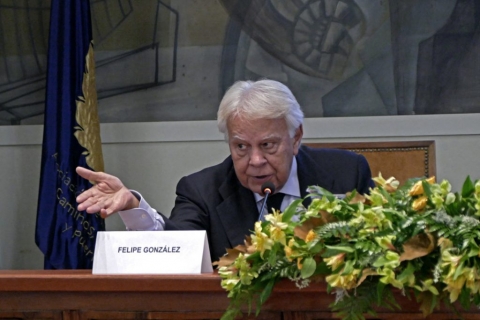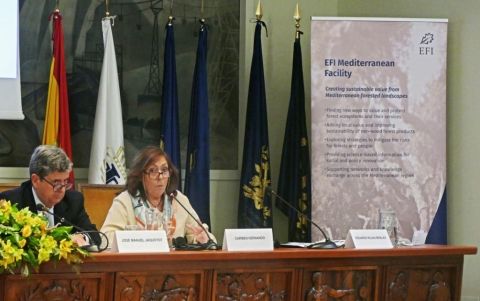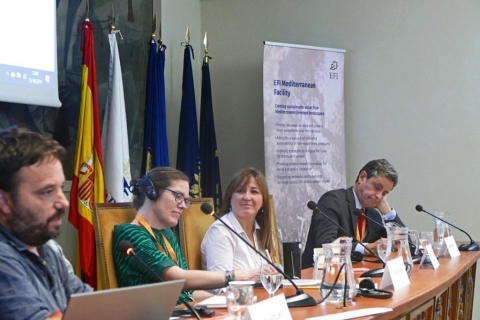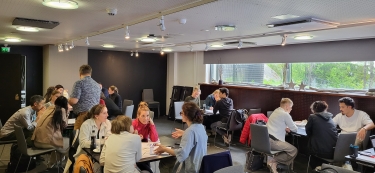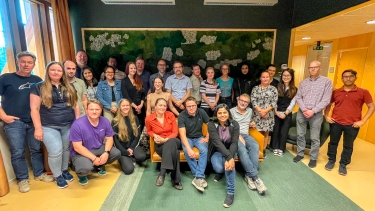Facing Forest Fires: Visions and actions for global fire-resilient landscapes
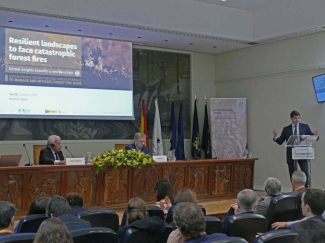
Fire starts with a spark. Once ignited it can flourish, fed and spread by fuel and oxygen, the flames and smoke fanned great distances by the wind. In dry, fire-prone climates, in the midst of the climate crisis, in can seem unbounded. The threat of uncontrolled megafires looms in ecosystems across the globe: from tropical Indonesia to the Australian bush and from the forested mountain ranges of southern California to the wildland-urban interface in Mediterranean Spain. This threat is exacerbated in recent times by changing weather patterns, rural abandonment, the mounting costs of firefighting activities, depleted budgets for land management and fire prevention and years of suppression-only policies. Coupled with wide gaps in social perceptions and in knowledge on how best to mitigate fire risk, the result is a fire regime that puts people and property, woods and wildlands at risk.
The international conference, “Resilient landscapes to face catastrophic forest fires: global insights towards a new paradigm,” held in Madrid on 14 and 15 October, started with a spark. European Forest Institute (EFI) Director, Marc Palahí, opened the event with a seemingly simple question: how can we take action on catastrophic forest fires? Bringing together fire experts, policymakers and key stakeholders, the conference searched for answers across scales, disciplines and experiences. From local to international policy, and from scientific research to practice, these global actors defined, discussed, and debated the many socioeconomic components of fire and sought to identify possible solutions.
The event, organised by EFI with the National Institute for Agricultural and Food Research and Technology (INIA) and hosted by the Instituto de la Ingeniería de España, welcomed more than 140 international participants. INIA Director, Esther Esteban Rodrigo, and Isabel Bombal Díaz, representing the Spanish Ministry of Agriculture, Fisheries and Food, inaugurated the conference, calling for a united future strategy on forests in Europe in order to address the root causes of fire.
In their high-level opening dialogue, the former Prime Ministers of Spain and Finland, Felipe González and Esko Aho, shared their visions for a resilient and sustainable Europe, discussing the role of rural areas and the bioeconomy in creating fire-resilient landscapes. Felipe González drew this link clearly, stating “the fight against forest fires brings us to the need for a forest policy that promotes sustainable, profitable use, and leads towards a healthy bioeconomy system for rural areas.”
Grounding the link in action, Esko Aho proposed that Europe become the “Silicon Valley” of the bioeconomy, investing public and private resources in research and development, focussing on strategic policy objectives, and adopting Europe-wide standards. Drawing on their combined 18 years of experience as leaders of European nations, both speakers highlighted the important opportunity to harness forest resources to propel the shift toward resilient and viable rural areas.
Keynote speakers Peter F. Moore, Food and Agriculture Organisation of the United Nations (FAO), and Dave E. Calkin, US Forest Service Rocky Mountain Research Station, grounded these political visions in global research and experience in a session chaired by Eduardo Rojas Briales, Dean of the Official Association of Spanish Foresters. As Mr. Moore underlined, “bringing policy down to the field, and bringing feedback from the field to policy, is important and hard.” As the context for forest fires changes – through the climate crisis, urbanisation, and land-use change—we must also change our concept, and we need to do this faster.
But this does not necessarily mean immediate response. As Dr. Calkin’s presentation made clear, reactionary responses to fire are expensive and ineffective. Rather, both keynote speeches highlighted the need to build a viable integrated fire management system based on context-specific, human-oriented, social and technical actions to address the social, economic, ecological, biophysical and cultural causes of the problem. Thus, we must be “patient for results, but not wait for strategic action.”
The subsequent speakers in this session provided a global panorama of fire risk reduction approaches at the landscape scale. Francisco Rodríguez y Silva, University of Cordoba (Spain), Luca Tacconi, Australian National University, Cristina Vega-García, University of Lleida (Spain), and Val Charlton, LANDWORKS (South Africa), gave presentations seeking to identify the social and economic aspects that play a decisive role in catastrophic wildfire prevention. These interventions added a scientific dimension to the challenges acknowledged in research and addressed by practical experience, reflecting on knowledge gaps and opportunities for innovative funding, risk communication, education and regulation.
their final remarks.
Several transversal lines emerged, which were summarised by José Manuel Jaquotot of the Spanish Ministry and Carmen Hernando Lara of CIFOR-INIA. In short, we must identify who is responsible for prevention actions, how we can effectively communicate risk and shift social perception, and how we can assess the effectiveness of enforcement and prevention actions.
The second day of the conference focussed on Mediterranean programmes for fire-preventing action, as well as emerging lessons in science, practice and fire prevention. Four case presentations from Ana Morgado, Barcelona Provincial Council, Rosário Alves, FORESTIS (Portugal), Elena Hernández, Spanish Ministry, and Javier Ezquerra, Regional Government of Castilla and Leon (Spain), made the transition from high-level policy and science, to local policy and practice. These cases highlighted how landscape-scale stakeholders implement social and economic tools to improve management efforts.
Finally, an energetic panel discussion brought together Marc Castellnou, Firefighters of Catalonia (Spain), Dave E. Calkin, US Forest Service, Cathelijne Stoof, Wageningen Fire Centre (Netherlands), Marta Corella, Mayor of Orea (Spain) and Mario Monteiro, Agency for the Integrated Management of Rural Fires (Portugal). The five panellists debated our understanding of resilient landscapes, highlighted major challenges to fire prevention action, and proposed solutions and opportunities to improve the social, economic, and ecological resilience of rural areas in the face of extreme and increasing wildfire risk. With a high number of questions and interventions from the auditorium, the session also included live polling, allowing panellists to respond directly to audience perceptions of the key components of working toward fire-resilient landscapes, including those polled by viewers of the event’s livestream.
Two concurrent technical visits closed the conference, one to the Spanish Ministry’s Firefighting Operations Centre (CCINF) and another to INIA’s Forest Fire Laboratory. These visits grounded two days of rich discussion in the stark reality of experience. In the Firefighting Operations Centre, attendees saw first-hand how fires are monitored and strategic suppression responses directed in real time, while at the Forest Fire Laboratory, a megafire simulation let attendees feel the intense heat and see the rapidity with which dry forest underbrush is engulfed in roaring flames.
Throughout this two-day conference, the question of how we can take action on catastrophic forest fires flourished with analysis from social, economic, historical, cultural, and ecological perspectives. Fed by scientific knowledge, practical cases and lively debate, the event left speakers and participants alike with new insights and renewed motivation to address knowledge gaps and policy needs to put ideas into action. We are no longer simply talking about a new paradigm for fire-resilient landscapes, but igniting it.
You can view the image gallery of this event on EFIMED’s official Flickr. In addition, you can also see all the filmed sessions of the conference on EFI’s website.
